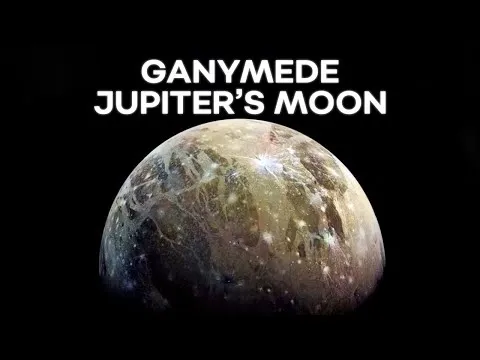We are talking about Ganymede, the largest moon of Jupiter and at the same time the largest moon in the Solar System, which is larger in diameter than Mercury.
Astronomers believe that life can flourish on this globe because it contains an ocean of liquid water.
The latest discovery was made by scientists at Kobe University, the National Institute of Technology and Oshima College in Japan, and it turns out that one of Ganymede's greatest mysteries is the largest impact crater in the solar system.
Astronomers carefully analyzed the data obtained from research probes that passed Jupiter and its moons.
Computer modeling resulted in the discovery of a huge basin with a diameter of up to 7,700 kilometers.
According to them, the crater was created as a result of an asteroid 150 kilometers in diameter hitting Ganymede. Japanese astronomers emphasize that we are dealing here with an unheard of object.
Jupiter's moon is 16,000 kilometers in circumference, so the crater itself occupies a large part of its surface.
Interestingly, the Silver Globe also has a giant impact crater.
It is the South Pole Basin - Aitken.
It has a diameter of 2,500 kilometers, a depth of 13 kilometers, and is located on the side of the moon that is invisible from the Earth. Astronomers have been keeping a close eye on the moons of Jupiter and Saturn recently, as NASA and ESA are preparing space probe missions there to thoroughly examine their icy surfaces that hide
oceans of liquid water.
It is there that hydrothermal vents can be found, and simple forms of life can flourish, as happened on Earth billions of years ago.
obtain detailed data about it.
But it is not everything.
Poles will play a major role in the entire mission.
The probe will feature instruments such as: a set of RPWI plasma instruments for conducting a radio experiment and an SWI instrument for observing submillimeter waves generated by excited molecules in the atmosphere of Jupiter. Both systems are built by Polish companies, such as Astronika,
developing in the private sector of the space industry, and with the participation of the Space Research Center of the Polish Academy of Sciences.
Thanks to them, we will learn how the strong electric and magnetic fields from Jupiter affect the largest moons of this planet, Ganymede and Europa, and we will be able to study the physical and chemical processes occurring in Jupiter's central atmosphere and assess the thickness and characterize the ice sheets.
its moons.
